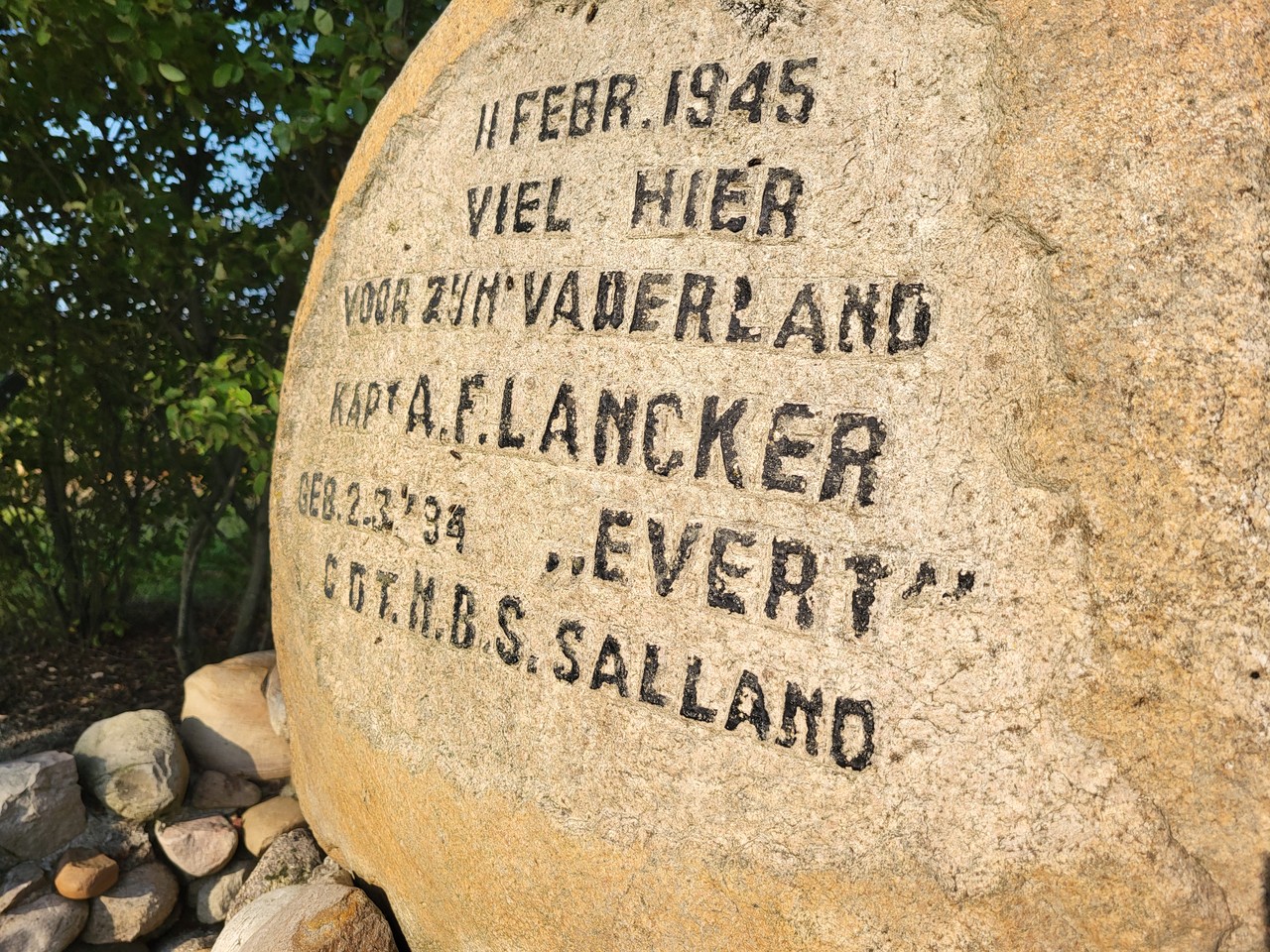In the summer of 1942, Lancker was linked to the assassination of an SD agent. The SD began searching for him. In the autumn of 1942, Lancker decided to find a hiding place in a region where no one knew him. He ended up in Hellendoorn. Under the alias “Evert de Jong,” he took up residence in a house on Ommerweg, from where he led the resistance in the surrounding area.
By September 1944, the danger to Lancker had grown too great, and he moved to the home of headteacher Nieuwboer in Hoge Hexel. This period proved to be especially difficult for him — not only because of an internal power struggle within the resistance, but also because his fiancée was being held prisoner by the Germans throughout this time.
On 24 November, Lancker wrote to the commander of Overijssel: “These past weeks have demanded too much from me.” In the same letter, he announced his resignation from the Dutch Interior Forces. That Lancker had much support within the resistance became clear the very next day, when a large group of resistance fighters also handed in their resignations. Feeling bolstered by this show of solidarity, Lancker informed the commander of Overijssel on 28 November that his departure would not serve the greater good and withdrew his resignation.
From his room, Lancker continued to direct the resistance, mostly in writing and in deliberate isolation for security reasons. Even his own children did not know where their father was. Most members of the resistance — save for a few exceptions — knew Lancker only by reputation.
On Sunday 11 February 1945, at around 2:00 p.m., a German car carrying one German and three Dutch members of the Sicherheitsdienst (SD) stopped outside Nieuwboer’s home. When Lancker, along with the others present, was ordered to go with them to Almelo, he quickly found his revolver in his coat and opened fire almost immediately. Two SD men fell, fatally wounded.
Lancker fled the house westward toward De Piksen, pursued under fire by two Dutch SD men. Those still inside the house, having prayed briefly for the dying German, suddenly had the chance to seek a safe hiding place. Lancker’s escape saved their lives. He himself was fatally hit during his flight, at what is now Monumentweg. He died alone on the heath.
That evening, Dr. Beens officially confirmed his death. His body was taken away in a German truck. The resistance hero was buried at the Appelhofstraat cemetery in Wierden. On 16 May 1945, shortly after the liberation, Lancker was reburied with military honors at the public cemetery in Hellendoorn.
As retaliation for the killing of two SD men, the Germans demanded vengeance: thirty anti-German residents of Wierden were to be executed publicly. In the end, the list was reduced to a single name. Rikus Beverdam was murdered in cold blood by two SD men in Almelo on 13 February 1945.
